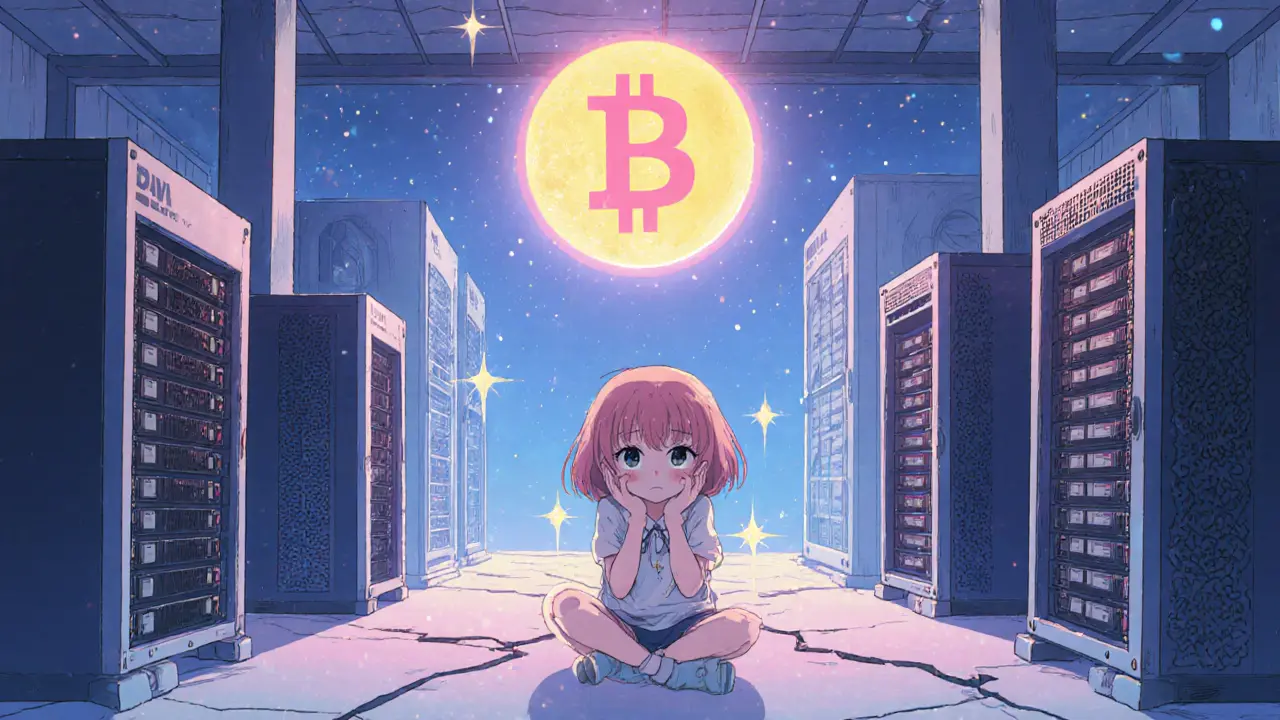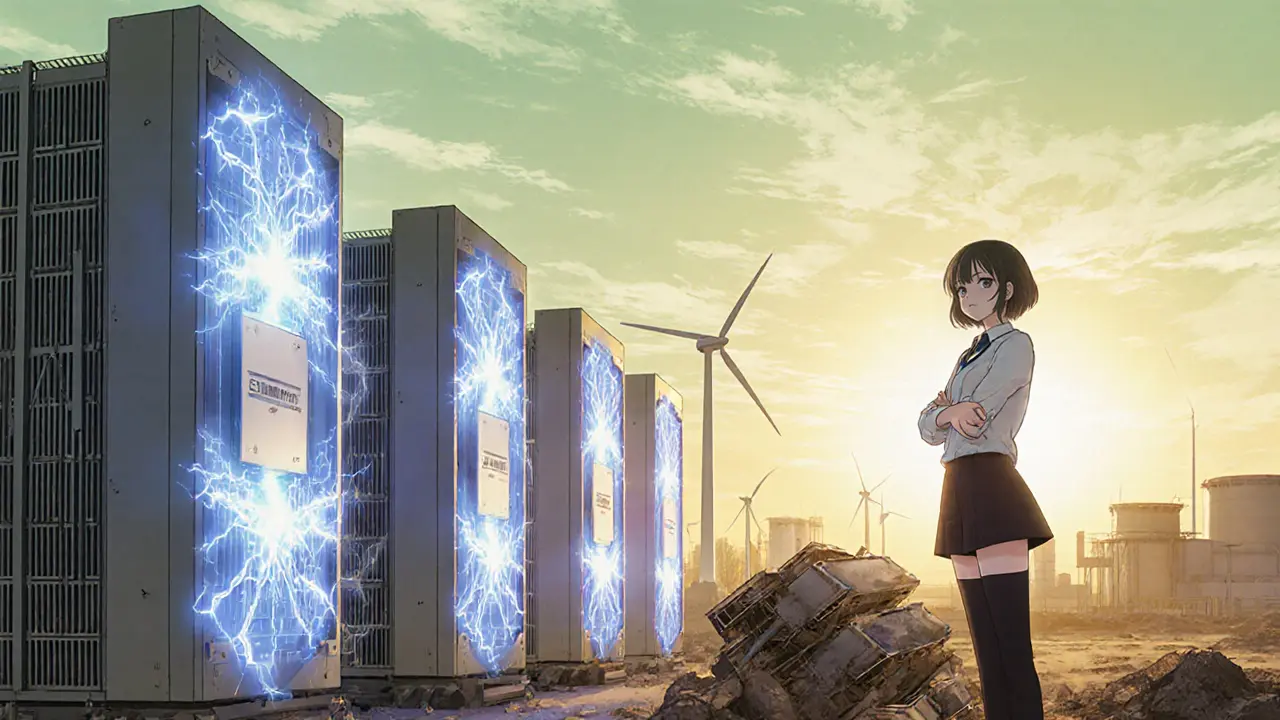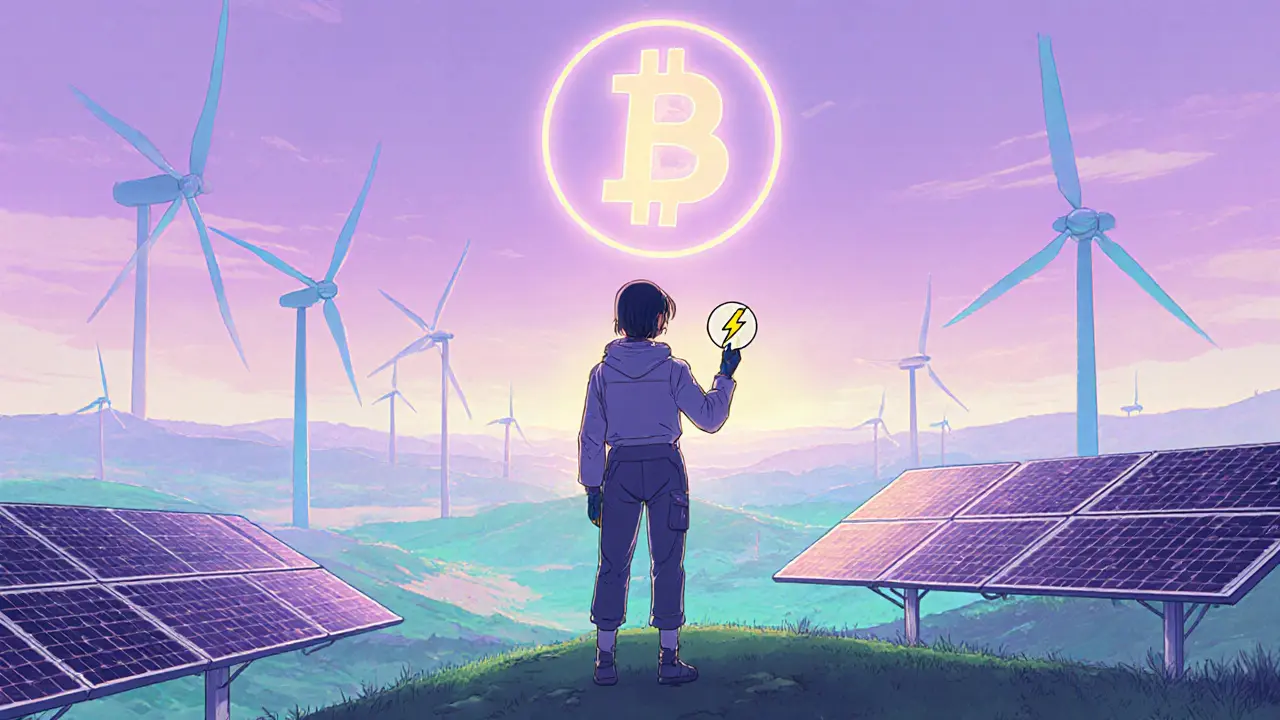Bitcoin Miner Capitulation After Halving: Impact, Survival Tips, and Future Outlook

Bitcoin Mining Profitability Calculator
Mining Parameters
Results
Estimated Daily Profit
When the block reward was cut in half in April 2024, many miners felt the floor shake beneath them. The sudden loss of 50% of revenue forced a wave of small‑scale operators to shut down, while the big players scrambled to stay afloat. This article breaks down why miner capitulation happens after a halving, how it reshapes the Bitcoin network, and what surviving miners need to do to thrive in the next few years.
What is miner capitulation?
Bitcoin miner capitulation is a process where mining farms that can’t cover their operating costs after a halving event cease operations, sell off equipment, or switch to other activities. The trigger is simple: the protocol reduces the block reward by 50% every 210,000 blocks, which drops the cash flow for every hash‑producing machine overnight. If a miner’s electricity price, hardware efficiency, or capital cushion isn’t optimal, the profit margin evaporates and they’re forced to quit.
Why the 2024 halving hit miners so hard
- Reward fell from 6.25BTC to 3.125BTC per block, instantly halving mining revenue.
- Operating costs-especially electricity-did not change, so the cost‑to‑revenue ratio doubled.
- Bitcoin’s price hovered around $54,000, barely above the break‑even level many farms need after the reward cut.
- Older ASIC models (e.g., Antminer S19) average 30TH/s per 3000W, while newer generations push 35TH/s per 3000W, creating a 15‑25% efficiency gap that many legacy operations couldn’t bridge.
Combined, these factors meant that miners earning roughly $0.055 per day per terahash before the halving saw that figure drop to $0.0275 after. For farms paying $0.08/kWh or higher, the math turned negative within weeks.
Who survived and who didn’t?
Publicly listed miners with deep pockets and cheap power contracts kept most of their hash power. Companies like Marathon Digital, Iris Energy, and Bitfarms reported production drops of 20‑30% in the first month but stayed in business because they:
- Lock in electricity rates below $0.05/kWh, often through renewable‑energy PPAs.
- Own the latest ASIC hardware with efficiency >30TH/s per 3000W.
- Maintain cash reserves covering 6‑12 months of operating expenses.
In contrast, independent miners running legacy S9 or early S19 machines in regions with retail rates above $0.08/kWh were forced to shut down. Reddit’s r/BitcoinMining thread from May2024 saw dozens of users posting “mine or die” messages, confirming an estimated 10‑20% drop in global hash rate within six months of the halving.

How capitulation reshapes the network
When a sizable chunk of hash power disappears, the network’s difficulty adjusts downwards roughly every 2,016 blocks (about two weeks). This built‑in mechanism restores profitability for the remaining miners, but the transition can take 3‑6 months. The short‑term effect is a dip in security - fewer active miners mean a lower total hashrate - but the long‑term outcome is a stronger, more efficient network.
| Period | Global Hash Rate (EH/s) | Network Difficulty |
|---|---|---|
| Pre‑halving (Mar2024) | 415 | 78T |
| +1month (May2024) | 355 | 66T |
| +3months (Jul2024) | 380 | 72T |
| +6months (Oct2024) | 398 | 75T |
The table shows a sharp 14% hash‑rate dip after one month, followed by a gradual rebound as difficulty eased and remaining miners upgraded equipment.
Three pillars for surviving the next halving
To avoid being the next casualty, miners should focus on three core strategies.
1. Boost operational efficiency
- Upgrade to the latest ASIC models (e.g., Antminer S19 Pro+, WhatsMiner M50) that deliver >35TH/s per 3000W.
- Implement hot‑swap cooling or immersion techniques to shave 5‑10% off power draw.
- Consolidate under‑utilized racks to increase overall farm PUE (Power Usage Effectiveness) to >0.90.
2. Secure ultra‑low‑cost electricity
- Negotiate direct Power Purchase Agreements (PPAs) with wind or hydro projects, targeting <$0.04/kWh.
- Relocate to jurisdictions offering industrial rates-e.g., Texas, Quebec, Iceland, or parts of Central Asia.
- Deploy behind‑the‑meter renewable installations (solar + storage) to offset peak‑price grid purchases.
3. Build robust capital buffers
- Maintain cash reserves covering at least 9 months of operating expenses (power, maintenance, staffing).
- Diversify revenue: earn transaction fees, stake a portion of mined BTC in Lightning Network liquidity pools, or lease hash power to cloud‑mining platforms.
- Plan capital‑expenditure cycles around halving dates-start hardware upgrades 12‑18 months before the event.
Industry consolidation: what it means for miners and investors
Post‑halving periods invariably see stronger firms snapping up distressed assets. In 2024, Riot Platforms acquired a bankrupt Canadian farm for $55million, gaining access to cheap hydro power contracts. Such moves accelerate centralization, but they also inject fresh capital into the network, keeping overall security high.
For investors, the takeaway is two‑fold:
- Companies with diversified energy sources and modern hardware are better positioned to weather future halvings and tend to outperform during price corrections.
- Watch for M&A activity-buy‑outs often come with a premium on the target’s hash‑rate assets, which can boost the acquiring firm’s market share quickly.

Looking ahead to the 2028 halving
Only about 1.35million BTC remain to be mined, so the next reward cut will be the most severe in absolute terms. Analysts project that only operations achieving electricity costs below $0.03/kWh and running next‑gen ASICs (efficiency >40TH/s per 3000W) will stay profitable without relying heavily on price spikes.
Meanwhile, the emerging Bitcoin layer‑2 protocols (Lightning Network, Stacks) will offer additional fee revenue streams, helping miners offset lower block rewards. Companies that can integrate these services early will have a competitive edge when the 2028 halving arrives.
Quick takeaways
- Halvings halve revenue instantly; miners with high power costs or old hardware capitulate.
- Survivors upgrade ASICs, lock in cheap renewable power, and hold cash reserves.
- Hash‑rate drops 10‑20% after a halving, then rebounds as difficulty adjusts.
- Consolidation is inevitable; look for firms with PPAs and modern equipment.
- Future profitability hinges on sub‑$0.03/kWh electricity and next‑gen ASIC efficiency.
Frequently Asked Questions
What exactly triggers miner capitulation?
The trigger is the sudden 50% reduction in block reward during a halving. If a miner’s cost per terahash (mainly electricity) stays the same, profit margins collapse. Those without low‑cost power, efficient ASICs, or cash reserves are forced to shut down.
How long does it take for network difficulty to adjust after a halving?
Difficulty readjusts every 2,016 blocks-about two weeks. However, the full rebound in hash rate usually spans 3‑6 months as unprofitable miners exit and the remaining farms scale up.
What electricity cost is considered “cheap” for Bitcoin mining today?
Industry benchmarks place sub‑$0.05/kWh as the break‑even point for most modern ASICs at current Bitcoin prices. The most resilient miners aim for under $0.04/kWh, often through renewable PPAs.
Can small miners stay alive by joining a mining pool?
Pooling smooths income but doesn’t fix the underlying cost structure. If a miner’s power bill exceeds the pool’s payout after the halving, the operation will still be unsustainable.
What role do layer‑2 protocols play in post‑halving profitability?
Layer‑2 solutions generate transaction fees that miners can claim, supplementing the reduced block reward. Early adopters that run Lightning Network nodes or participate in Stacks can capture these extra fees.





Shane Lunan
October 13, 2025 AT 02:25Miner vibes changed hard after halving
Jeff Moric
October 18, 2025 AT 18:06It's tough watching smaller farms go under, but those who lock in cheap power and upgrade ASICs can still ride the wave. Keeping a cash buffer and negotiating renewable PPAs helps smooth out the dip. Also, diversifying revenue with layer‑2 fees can add a cushion.
Bruce Safford
October 24, 2025 AT 13:00Wow, the halving really blew the roof off the small‑scale ops. Most of those S19 machines were already chewing on thin margins, and suddenly their revenue got slashed in half. Nobody thought the price would stay flat at $54k, so the math went from barely breaking even to screaming loss. Even the big farms felt the squeeze because they still pay the same electricity rates as before. The network difficulty only drops after two weeks, so there’s a lag before the profitability curve starts to rise again. Meanwhile, miners with old firmware can’t even push the hardware to its peak efficiency. I’ve seen folks offload their ASICs on the second‑hand market at rock‑bottom prices, flooding the resale market. Some of them are trying to re‑hash in places with super cheap hydro power, hoping the lower electricity will offset the reward cut. The hash‑rate dip of 14% you mentioned matches the on‑chain data pretty well. But remember, the difficulty adjustment will gradually bring things back to a new equilibrium. If you’re running a farm with a power contract above $0.07/kWh, you probably need to consider either upgrading to the M50/WhatsMiner or shutting down. The newer chips are about 20% more efficient, which can be the difference between profit and loss. Also, don’t forget that transaction fees are creeping up as users flock to Lightning, providing a modest extra revenue stream. All in all, this halving is a classic shake‑out: the weak get weeded out, the strong survive, and the network becomes leaner but more resilient.
Jordan Collins
October 30, 2025 AT 07:53Indeed, the data you shared highlights the typical survival playbook. Securing sub‑$0.05/kWh electricity and deploying the latest ASICs are the two pillars that keep a mining operation afloat. Maintaining a cash reserve for at least six months of OPEX also cushions the post‑halving volatility. In addition, diversifying income through layer‑2 fee capture can provide a small but steady buffer. These strategies collectively reduce exposure to the abrupt revenue drop that the halving causes.
Andrew Mc Adam
November 5, 2025 AT 02:46Reading through this, I can’t help but feel a surge of admiration for the miners who stay the course. The halving isn’t just a number; it’s a crucible that tests every facet of a mining business. Those who have locked in renewable PPAs are already humming with optimism, their operations glowing with clean energy and lower costs. Meanwhile, farms that sprinted to upgrade their hardware are now perched on the edge of profitability, eyes on the next difficulty adjustment. It’s a dramatic dance of risk and reward, and I’m rooting for every miner who refuses to fold.
Shrey Mishra
November 10, 2025 AT 21:40The emotional weight of this halving is palpable across the mining community. While some celebrate the inevitable “survival of the fittest,” others mourn the loss of countless small‑scale dreamers. The market will inevitably consolidate, but the human cost behind each shuttered rig is often glossed over. It’s a stark reminder that technology’s progress can leave behind the very people who built its foundation. Let us not forget the faces behind those cold ASICs and the stories of perseverance that are now silent.
Ken Lumberg
November 16, 2025 AT 16:33It is a moral failing of the industry that profit is placed above sustainable energy practices. When large miners hoard cheap power at the expense of local communities, they betray a responsibility to the environment. The halving should serve as a wake‑up call to enforce stricter regulations on carbon footprints. Ethical mining isn’t optional; it’s an imperative that must be embedded into every corporate strategy.
Blue Delight Consultant
November 22, 2025 AT 11:26From a philosophical standpoint, the halving can be viewed as a natural rhythm within the Bitcoin protocol, echoing cycles of scarcity that shape value. It forces a re‑evaluation of what truly constitutes “security” in a decentralized network when computational power fluctuates. The interplay between economic incentives and cryptographic resilience invites contemplation on the very nature of trust in trustless systems. Such reflections deepen our appreciation of Bitcoin’s design beyond mere profit metrics.
Wayne Sternberger
November 28, 2025 AT 06:20Given the current landscape, it is prudent for operators to conduct a thorough cost‑benefit analysis before committing further capital. Emphasizing incremental upgrades rather than wholesale replacements can mitigate financial risk. Additionally, exploring partnerships with renewable energy providers may yield mutually beneficial contracts that lower electricity rates while promoting sustainability. These measured steps can help maintain operational stability in the post‑halving era.
Gautam Negi
December 4, 2025 AT 01:13Contrary to the prevailing optimism, the halving may actually usher in a prolonged period of low hash‑rate, undermining the network’s security assumptions. If miners continue to exit en masse, the difficulty reduction could be insufficient to attract new entrants, leaving the chain vulnerable to attacks. This scenario challenges the mainstream narrative that difficulty adjustments always self‑correct. Stakeholders should therefore prepare contingency plans rather than assuming inevitable recovery.
Shauna Maher
December 9, 2025 AT 20:06Big miners are just hoarding power like fascists.